Unveiling the role of artificial intelligence for wound assessment and wound healing prediction
Wound healing is a very dynamic and complex process as it involves the patient, wound-level parameters, as well as biological, environmental, and socioeconomic factors. Its process includes hemostas
[...] Read more.
Wound healing is a very dynamic and complex process as it involves the patient, wound-level parameters, as well as biological, environmental, and socioeconomic factors. Its process includes hemostasis, inflammation, proliferation, and remodeling. Evaluation of wound components such as angiogenesis, inflammation, restoration of connective tissue matrix, wound contraction, remodeling, and re-epithelization would detail the healing process. Understanding key mechanisms in the healing process is critical to wound research. Elucidating its healing complexity would enable control and optimize the processes for achieving faster healing, preventing wound complications, and undesired outcomes such as infection, periwound dermatitis and edema, hematomas, dehiscence, maceration, or scarring. Wound assessment is an essential step for selecting an appropriate treatment and evaluating the wound healing process. The use of artificial intelligence (AI) as advanced computer-assisted methods is promising for gaining insights into wound assessment and healing. As AI-based approaches have been explored for various applications in wound care and research, this paper provides an overview of recent studies exploring the application of AI and its technical developments and suitability for accurate wound assessment and prediction of wound healing. Several studies have been done across the globe, especially in North America, Europe, Oceania, and Asia. The results of these studies have shown that AI-based approaches are promising for wound assessment and prediction of wound healing. However, there are still some limitations and challenges that need to be addressed. This paper also discusses the challenges and limitations of AI-based approaches for wound assessment and prediction of wound healing. The paper concludes with a discussion of future research directions and recommendations for the use of AI-based approaches for wound assessment and prediction of wound healing.
Dinh T. P. Le, Tuan D. Pham
Wound healing is a very dynamic and complex process as it involves the patient, wound-level parameters, as well as biological, environmental, and socioeconomic factors. Its process includes hemostasis, inflammation, proliferation, and remodeling. Evaluation of wound components such as angiogenesis, inflammation, restoration of connective tissue matrix, wound contraction, remodeling, and re-epithelization would detail the healing process. Understanding key mechanisms in the healing process is critical to wound research. Elucidating its healing complexity would enable control and optimize the processes for achieving faster healing, preventing wound complications, and undesired outcomes such as infection, periwound dermatitis and edema, hematomas, dehiscence, maceration, or scarring. Wound assessment is an essential step for selecting an appropriate treatment and evaluating the wound healing process. The use of artificial intelligence (AI) as advanced computer-assisted methods is promising for gaining insights into wound assessment and healing. As AI-based approaches have been explored for various applications in wound care and research, this paper provides an overview of recent studies exploring the application of AI and its technical developments and suitability for accurate wound assessment and prediction of wound healing. Several studies have been done across the globe, especially in North America, Europe, Oceania, and Asia. The results of these studies have shown that AI-based approaches are promising for wound assessment and prediction of wound healing. However, there are still some limitations and challenges that need to be addressed. This paper also discusses the challenges and limitations of AI-based approaches for wound assessment and prediction of wound healing. The paper concludes with a discussion of future research directions and recommendations for the use of AI-based approaches for wound assessment and prediction of wound healing.
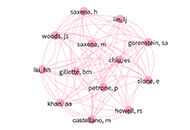 Unveiling the role of artificial intelligence for wound assessment and wound healing predictionOpen AccessReviewWound healing is a very dynamic and complex process as it involves the patient, wound-level parameters, as well as biological, environmental, and socioeconomic factors. Its process includes hemostas [...] Read more.Dinh T. P. Le, Tuan D. PhamPublished: August 31, 2023 Explor Med. 2023;4:589–611
Unveiling the role of artificial intelligence for wound assessment and wound healing predictionOpen AccessReviewWound healing is a very dynamic and complex process as it involves the patient, wound-level parameters, as well as biological, environmental, and socioeconomic factors. Its process includes hemostas [...] Read more.Dinh T. P. Le, Tuan D. PhamPublished: August 31, 2023 Explor Med. 2023;4:589–611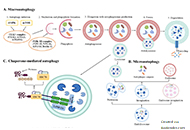 Autophagy and diabetesOpen AccessReviewThe current literature findings on autophagy’s beneficial and detrimental roles in diabetes mellitus (DM) and diabetes-related comorbidities were reviewed. The effects of oral hypoglycaemic medici [...] Read more.Milan Obradovic ... Esma R. IsenovicPublished: August 31, 2023 Explor Med. 2023;4:576–588
Autophagy and diabetesOpen AccessReviewThe current literature findings on autophagy’s beneficial and detrimental roles in diabetes mellitus (DM) and diabetes-related comorbidities were reviewed. The effects of oral hypoglycaemic medici [...] Read more.Milan Obradovic ... Esma R. IsenovicPublished: August 31, 2023 Explor Med. 2023;4:576–588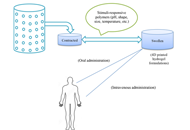 An overview of current advances and pharmaceutical uses of 3D and 4D printingOpen AccessReviewThe development of patient-specific prosthetics, medication administration, the manufacture of tissues and organs, and surgical planning have all benefited significantly from the use of three-dimens [...] Read more.Pankaj Sharma, Vinay JainPublished: August 31, 2023 Explor Med. 2023;4:560–575
An overview of current advances and pharmaceutical uses of 3D and 4D printingOpen AccessReviewThe development of patient-specific prosthetics, medication administration, the manufacture of tissues and organs, and surgical planning have all benefited significantly from the use of three-dimens [...] Read more.Pankaj Sharma, Vinay JainPublished: August 31, 2023 Explor Med. 2023;4:560–575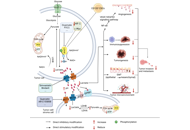 Lactate metabolic pathway regulates tumor cell metastasis and its use as a new therapeutic targetOpen AccessReviewAbnormal energy metabolism is one of the ten hallmarks of tumors, and tumor cell metabolism provides energy and a suitable microenvironment for tumorigenesis and metastasis. Tumor cells can consume [...] Read more.Weimei Xing ... Mingyue ZhuPublished: August 31, 2023 Explor Med. 2023;4:541–559
Lactate metabolic pathway regulates tumor cell metastasis and its use as a new therapeutic targetOpen AccessReviewAbnormal energy metabolism is one of the ten hallmarks of tumors, and tumor cell metabolism provides energy and a suitable microenvironment for tumorigenesis and metastasis. Tumor cells can consume [...] Read more.Weimei Xing ... Mingyue ZhuPublished: August 31, 2023 Explor Med. 2023;4:541–559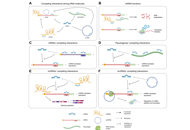 RNA-RNA competitive interactions: a molecular civil war ruling cell physiology and diseasesOpen AccessReviewThe idea that proteins are the main determining factors in the functioning of cells and organisms, and their dysfunctions are the first cause of pathologies, has been predominant in biology and biom [...] Read more.Cristina Barbagallo ... Marco RagusaPublished: August 31, 2023 Explor Med. 2023;4:504–540
RNA-RNA competitive interactions: a molecular civil war ruling cell physiology and diseasesOpen AccessReviewThe idea that proteins are the main determining factors in the functioning of cells and organisms, and their dysfunctions are the first cause of pathologies, has been predominant in biology and biom [...] Read more.Cristina Barbagallo ... Marco RagusaPublished: August 31, 2023 Explor Med. 2023;4:504–540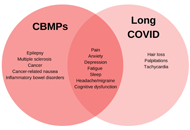 Cannabis-based medicinal products (CBMPs) for the treatment of Long COVID symptoms: current and potential applicationsOpen AccessReviewSevere acute respiratory syndrome coronavirus-2 (SARS-CoV-2) infection can result in a range of persistent symptoms impacting everyday functioning for a considerable proportion of patients, a condit [...] Read more.Hannah Thurgur ... David J. NuttPublished: August 31, 2023 Explor Med. 2023;4:487–503
Cannabis-based medicinal products (CBMPs) for the treatment of Long COVID symptoms: current and potential applicationsOpen AccessReviewSevere acute respiratory syndrome coronavirus-2 (SARS-CoV-2) infection can result in a range of persistent symptoms impacting everyday functioning for a considerable proportion of patients, a condit [...] Read more.Hannah Thurgur ... David J. NuttPublished: August 31, 2023 Explor Med. 2023;4:487–503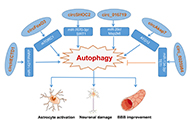 Autophagy in ischemic stroke: role of circular RNAsOpen AccessReviewStroke, a central nervous system (CNS) injury, is responsible for the second leading cause of death in the world, bringing a great burden on the world. Stroke is normally divided into ischemic and h [...] Read more.Yiting Hong ... Honghong YaoPublished: August 31, 2023 Explor Med. 2023;4:471–486
Autophagy in ischemic stroke: role of circular RNAsOpen AccessReviewStroke, a central nervous system (CNS) injury, is responsible for the second leading cause of death in the world, bringing a great burden on the world. Stroke is normally divided into ischemic and h [...] Read more.Yiting Hong ... Honghong YaoPublished: August 31, 2023 Explor Med. 2023;4:471–486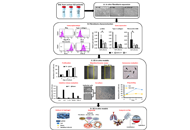 Utility of fibroblasts derived from broncho-alveolar lavage of patients with idiopathic pulmonary fibrosis or related disorders to develop in vitro modelsOpen AccessPerspectiveBroncho-alveolar lavage (BAL) represents a safe tool for the differential diagnosis of various pulmonary fibrotic diseases. Idiopathic pulmonary fibrosis (IPF) belongs to a heterogeneous group of di [...] Read more.Paolo Giannoni ... Daniela de ToteroPublished: August 31, 2023 Explor Med. 2023;4:461–470
Utility of fibroblasts derived from broncho-alveolar lavage of patients with idiopathic pulmonary fibrosis or related disorders to develop in vitro modelsOpen AccessPerspectiveBroncho-alveolar lavage (BAL) represents a safe tool for the differential diagnosis of various pulmonary fibrotic diseases. Idiopathic pulmonary fibrosis (IPF) belongs to a heterogeneous group of di [...] Read more.Paolo Giannoni ... Daniela de ToteroPublished: August 31, 2023 Explor Med. 2023;4:461–470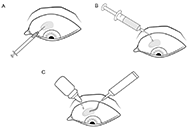 An easy and safe method of subconjunctival injection of antimetabolites in glaucoma surgeryOpen AccessOriginal ArticleAim: The use of 5-fluorouracil in glaucoma surgery is associated with a high risk of corneal complications, as even minimal doses of the drug at the ocular surface inhibit corneal epithelial cell [...] Read more.Sergey N. Svetozarskiy ... Anna N. SporyshevaPublished: August 30, 2023 Explor Med. 2023;4:453–460
An easy and safe method of subconjunctival injection of antimetabolites in glaucoma surgeryOpen AccessOriginal ArticleAim: The use of 5-fluorouracil in glaucoma surgery is associated with a high risk of corneal complications, as even minimal doses of the drug at the ocular surface inhibit corneal epithelial cell [...] Read more.Sergey N. Svetozarskiy ... Anna N. SporyshevaPublished: August 30, 2023 Explor Med. 2023;4:453–460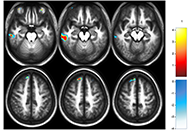 The brain activities of individuals with or without motivation to change: a preliminary study among cigarette smokersOpen AccessOriginal ArticleAim: Cigarette smoking is an addictive behavior that requires high motivation to change, a phenotype related to the functional activity of the brain. The study aims to examine motiv [...] Read more.Rasmon Kalayasiri ... Witaya SungkaratPublished: August 30, 2023 Explor Med. 2023;4:441–452
The brain activities of individuals with or without motivation to change: a preliminary study among cigarette smokersOpen AccessOriginal ArticleAim: Cigarette smoking is an addictive behavior that requires high motivation to change, a phenotype related to the functional activity of the brain. The study aims to examine motiv [...] Read more.Rasmon Kalayasiri ... Witaya SungkaratPublished: August 30, 2023 Explor Med. 2023;4:441–452